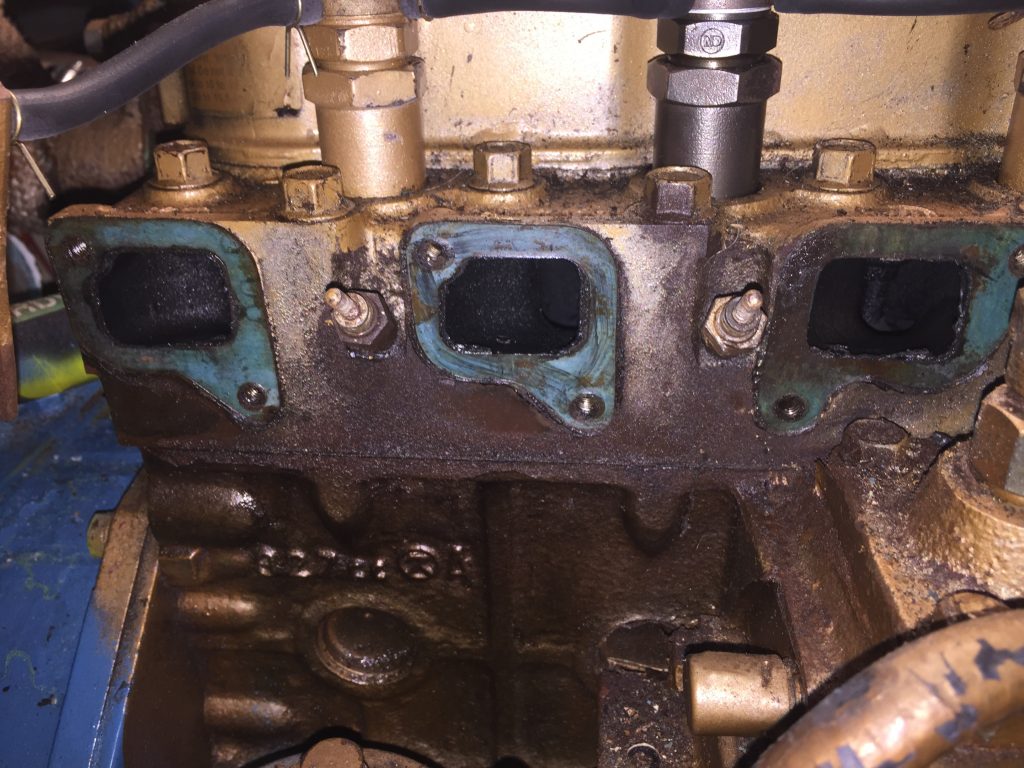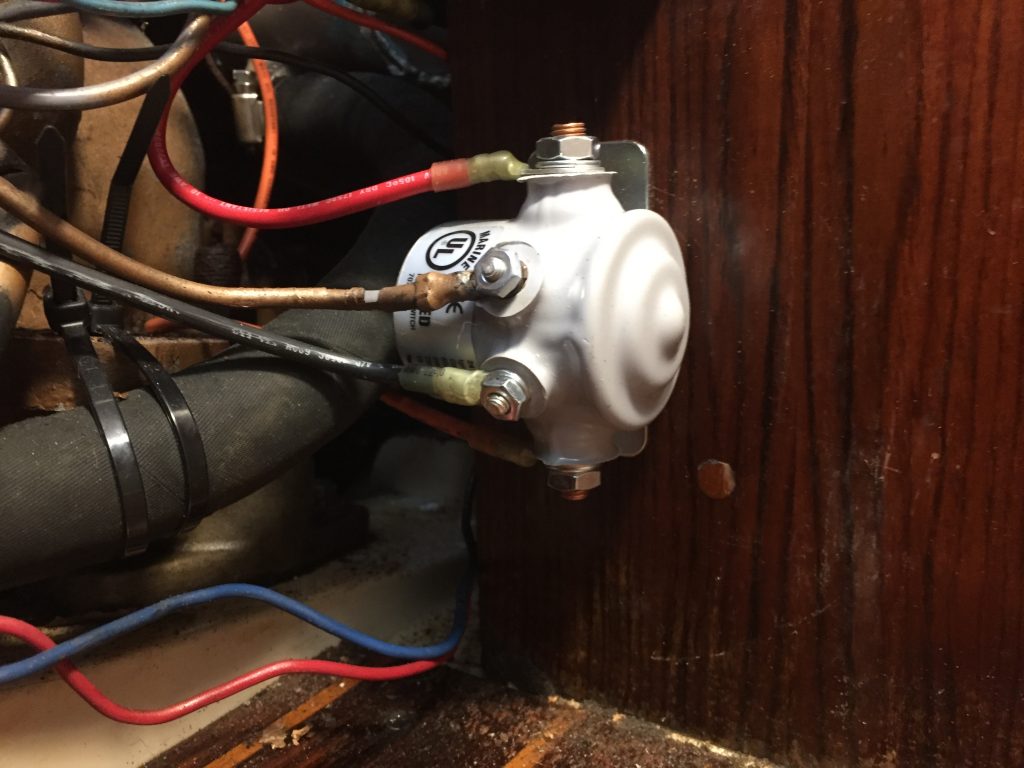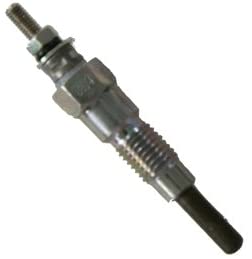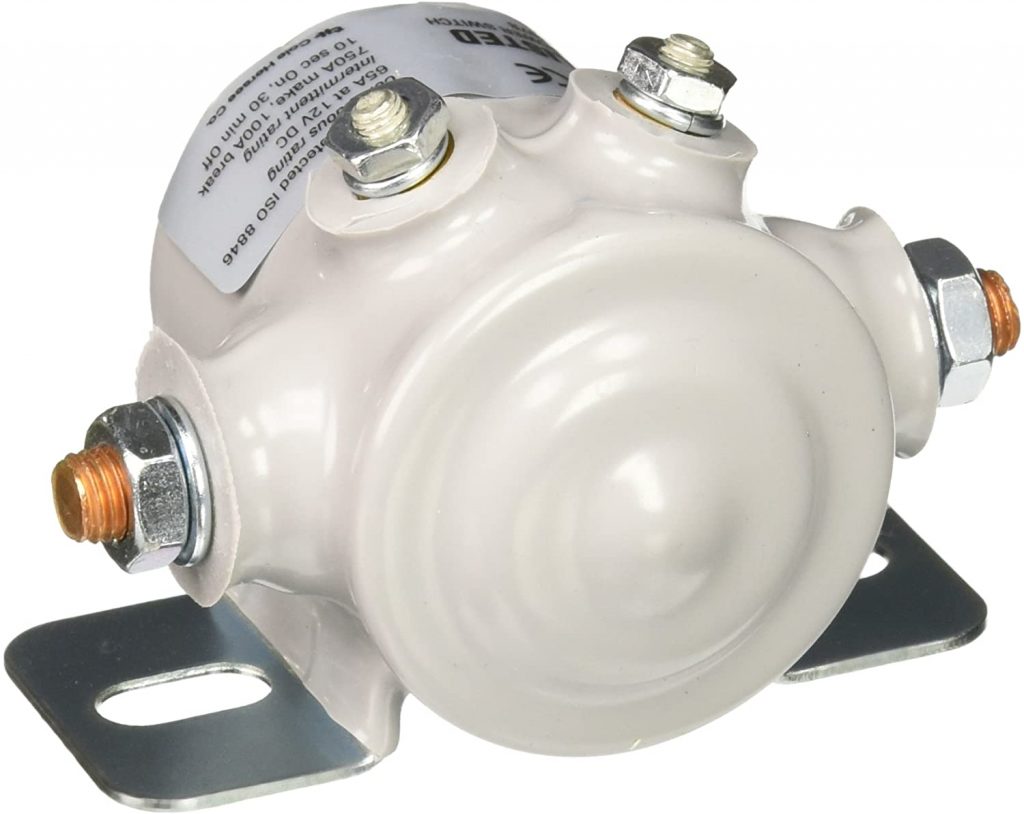The engine is a bit tired, but even so, it was taking longer to start than seemed reasonable. Even on a warm day, it would take 25-30 seconds on the glow plugs before it would start cleanly.
To address the issue, I decided on a two part approach. 1) replace the old glow plugs. 2) Add a solenoid to provide more current to the glow plugs.
Replace glow plugs
I suspected that one or more of the glow plugs was burnt out, so I removed their wires and tested them with a digital multimeter. Only one was within the acceptable range, so I bought 3 new ones.
On our M25XP, the Universal part number for the plugs is 299685, but they are quite expensive. I found what I think is the NGK equivalent (NGK Y103v) for much less (~$7) on Amazon.
To replace the plugs, I found that I had to remove the intake manifold to get to one of them. So I first removed the wires from the plugs, then unbolted the manifold. Beforehand, I had purchased new gaskets for the manifold, but it turned out that the old ones were fine, so I did not need them.

Once the manifold was off, it was pretty quick to unscrew the old plugs and insert the new ones.
I then reinstalled the manifold. Before reconnecting the wires, I did the solenoid upgrade as well (see below).
Adding a solenoid
One of the problems with the Catalina 36 wiring is that the power for the glow plugs comes from the engine panel in the cockpit via a small wire. With the high current draw of the glow plugs, there is a lot of voltage drop across that wire, which results in reduced heating from the plugs.
To fix this I added a solenoid to the circuit. The idea is that the old wire is used only to excite the solenoid, which supplies power directly from the starter battery via a short wire. I used a solenoid I bought from Amazon.
The primary load input terminal on the solenoid is connected where the battery cable attaches to the starter. The load output is connected to the glow plugs.
The old wire coming from the panel that used to connect directly to the aft plug is now connected to the signal input terminal on the solenoid. The other signal terminal is connect to the engine ground.

Now when I push the glow plug button on the panel, it excites the solenoid and sends power directly from the battery to the plugs via a short wire. There is now very little voltage drop, and the plugs are now hotter and faster.
On an average San Diego day, it only takes about 8 seconds on the glow plugs to get a nice smooth start.







